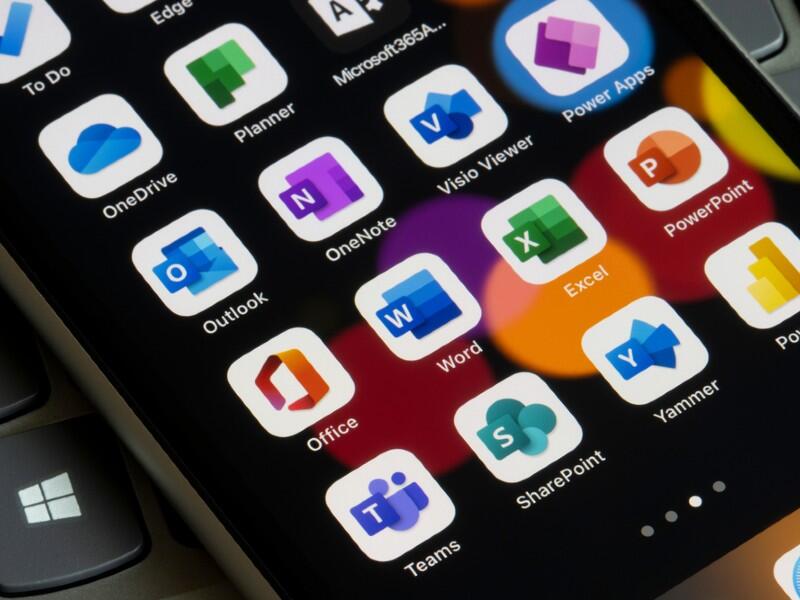
Windows 11: Microsoft marches toward open platforms
With Windows 11, Microsoft seems to be doubling down on its strategy to become a more open platform. How can this new open strategy help your company?

Image: Tada Images/Shutterstock
If you’re of a certain age, you might remember the Microsoft anti-trust trial of the late 1990s, or perhaps the Steve Ballmer years in which Microsoft’s strategy was to put Microsoft software on every device and elbow out anything without Windows or Office branding. The “Wintel” behemoth was a feared, occasionally loathed, seemingly immutable fixture of computing for tech leaders and consumers. For corporate users, it was essentially the only game in town save for the occasional experiment with open source.
SEE: Windows 11 cheat sheet: Everything you need to know (free PDF) (TechRepublic)
This dynamic also created the idea of tech leaders essentially joining a “team.” At various industry conferences and get-togethers, a CIO might refer to herself as having a “Microsoft and Oracle shop,” while another attendee might mention he was leading a “Microsoft and SAP shop.” The idea was reasonable enough, that if you bought hardware, software and services from a limited set of vendors, everything would work well together, and your procurement folks could likely drive down prices.
The Windows and the future are open
If nothing else, the coming Windows 11 is one more surprisingly aggressive step away from the idea of a monolithic “Microsoft shop.” By way of example of this transition, the Windows Store will not only be open to any Windows app, but will also allow download and installation of Android apps through a partnership with Washington neighbor Amazon. As developers clash with Apple and Google over their payment policies, Microsoft promises to allow for developers to bring their own commerce engines without restrictions or use Microsoft’s for a cut of the purchase price. Microsoft will continue to feature its own apps like Teams, but promises an “excellent experience” regardless of whether you’re using software from the home team or a competitor.
Similarly, the other former crown jewel of Microsoft’s product suite, Microsoft 365 (formerly Office), has continued to reach feature parity on platforms ranging from Mac OS to Android rather than forcing non-Windows users to play the role of second-class citizens. Revised subscription pricing and a “freemium” online version have taken essential Microsoft Apps from expensive tools outside most household and small-company budgets, to a de facto standard.
SEE: Windows 11 drops Oct. 5: Mark your calendars (TechRepublic)
While some might suggest Microsoft is simply evolving with the times, it’s interesting that its competitors are increasingly creating walled gardens with limited interoperability. Perhaps the most extreme example, Apple is revisiting a strategy it abandoned 2006 with a transition back to its own in-house processor designs, in-house hardware and a “walled garden” of apps and services that provide limited integration to other platforms.
Many of the arguments Microsoft is making in support of open software, hardware and broader ecosystems are as compelling as they are shocking that it’s Microsoft becoming a standard-bearer for open platforms. However, a push for openness makes sense, especially in a post-COVID-19 world, where remote working means everything from workers on $5,000 bespoke gaming machines to people sitting by the pool on a tablet rather than company-issued devices.
Open hearts and open minds
If nothing else, the pandemic forced many IT leaders to abandon the expectation that their workforce would predominantly be working from a pre-defined handful of laptop configurations, with a company-sanctioned operating system and application suite. Microsoft is certainly not the first company to recognize this transition, and everything from security to user management is moving away from an assumption that the device and its software can and should be tightly controlled and monitored. The fact that workers can access their documents from any device, anywhere, and maintain an appropriate level of access control is a crucial ingredient to the future of work, regardless of where it ultimately lands on the spectrum of in-office versus remote work.
SEE: This open-source Microsoft benchmark is a powerful server testing tool (TechRepublic)
The Apples and Googles of the world are operating from the seemingly dated notion that the only way to achieve the desired user experience is to tightly control every element of that experience. This might be a tenable strategy if you’re one of the 20 largest companies in the world, but it’s a tough row to hoe for tech leaders who may soon be back to supporting someone working from a disused desktop in the corner of the kitchen rather than the company-issued desktop languishing in a locked-down office.
The idea of following Microsoft for industry trends and guidance in corporate and consumer technology certainly fell out of vogue with most IT leaders in the waning days of the Ballmer years. However, a resurgent Microsoft that seems to be continuing to evolve to open platforms may be exactly the model that IT leaders need as other vendors erect walls around their ecosystems.
Also see
Stay connected with us on social media platform for instant update click here to join our Twitter, & Facebook
We are now on Telegram. Click here to join our channel (@TechiUpdate) and stay updated with the latest Technology headlines.
For all the latest Technology News Click Here
For the latest news and updates, follow us on Google News.


